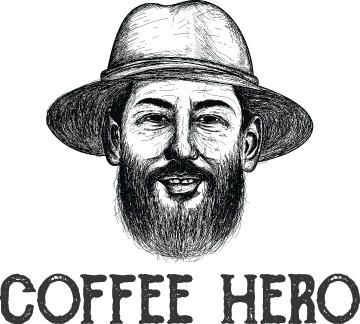
SINGLE ORIGIN COFFEE
Single Origin Coffee
What Is Single Origin Coffee? The Definitive Guide to Coffee's Purest Form

The Simple Answer (The Quick Version)
-
Single Origin Coffee simply means the coffee comes from one single, known place, often a specific farm or a small group of farms in a region. It is the opposite of a blend.
-
It's special because it has a unique and distinct flavour that comes from its specific environment (the soil, climate, and altitude). This is called "terroir."
-
Think of it like wine: a wine from the Barossa Valley tastes completely different from one from Margaret River. In the same way, a coffee from Ethiopia tastes nothing like one from Brazil.
-
You pay more for its clear story (traceability), its unique taste, and its high quality. It is the purest and most authentic taste of a coffee bean.
Journey Beyond "Just Coffee"
Most of the coffee we drink is like a beautiful choir, with many different beans blended together to create a familiar, harmonious sound.
But a single origin coffee... that's a solo artist.
It's one type of bean, from one specific place on Earth, with its own unique and unforgettable voice. This guide is your front-row ticket to meet these virtuosos. It's a journey to understand the story of a place, a story that is told in every single sip.
Chapter 1: The Definition - Cracking the Code of "Single Origin"
The Core Concept: A Sense of Place
At its heart, "Single Origin" means the coffee has traceability. We know exactly where it came from. This can mean a few different things:
-
Good: It comes from a single country (e.g., "Colombian Coffee").
-
Better: It comes from a specific region or a group of farms (e.g., "Ethiopia Yirgacheffe").
-
The Best: It comes from a single, specific farm, sometimes called a "micro-lot." This offers the purest taste of that one location.
This unique sense of place is influenced by everything from soil health to specific local plant genetics, an area of ongoing study by organizations like World Coffee Research.
The Power of "Terroir"
This is the magic word in the world of coffee and wine. Terroir (pronounced "ter-wahr") is the idea that a place's unique environment - its soil, its climate, its altitude, gives the food grown there a unique flavour that can't be copied anywhere else. Single origin coffee is the ultimate expression of terroir.
Chapter 2: The Great Debate - Single Origin vs. Blend
Is one better than the other? No. They just have different jobs.
The Goal of a Blend: Consistency
A coffee blend is a recipe, carefully crafted by a roaster to taste the exact same, day in and day out. Its job is to be balanced, reliable, and delicious in milk. It’s the dependable workhorse of the coffee world.
The Goal of a Single Origin: Character
A single origin’s job is to be unique. It’s a snapshot of a specific place at a specific time. Its flavour is its identity, and it’s meant to be celebrated for its distinct character.
Chapter 3: The World of Flavour - A Roaster's Tour of the Coffee Belt
Different places, different flavours. Here is a super simple guide to the classic tastes from around the world.
Africa: The Birthplace - Bright, Fruity & Floral
-
Ethiopia: The star of the show. Coffees from here are often bright and delicate. A Washed Yirgacheffe can taste like a cup of jasmine tea with lemon. A "Natural" Ethiopian can taste like a handful of fresh blueberries.
-
Kenya: Famous for its bold, complex, and juicy flavour. The classic Kenyan tasting note is a deep, rich blackcurrant taste.
The difference between a washed and a natural Ethiopian is one of the most exciting contrasts in coffee, a topic explored in depth by leading coffee publications like Perfect Daily Grind.
South America: The Heartland - Chocolate, Nuts & Sweetness
-
Brazil: The king of crowd-pleasing flavour. A classic Brazilian coffee is low in acidity, full-bodied, and tastes like chocolate and roasted nuts.
-
Colombia: The master of balance. A Colombian coffee is known for its sweet caramel notes, a touch of citrus, and a clean finish.
Asia: The Wild Card - Earthy, Spicy & Full-Bodied
-
Indonesia (Sumatra): Coffees from here are a world apart. They are famous for their incredibly heavy body and unique earthy, spicy, and sometimes herbal flavours.
Chapter 4: The Price of Purity - Why Single Origin Costs More
You might notice that single origin coffee is more expensive. There are good reasons for this.
-
More Hard Work: It takes a huge amount of extra work for farmers to grow, harvest, and sort a high-quality, traceable lot of coffee.
-
It's Rare: Coffee that tastes this good and comes from one specific place is much rarer than standard, mass-produced coffee.
-
It Supports the Farmer: As roasters, we pay a much higher price for these incredible coffees. That extra money goes directly to the farmers, rewarding them for their hard work and encouraging them to keep growing amazing coffee.
This dedication to quality is often verified by a professional scoring system, defined by the global authority on coffee, the Specialty Coffee Association (SCA)
Chapter 5: The Brewer's Guide - How to Get the Most from Your Beans
The Roaster's Philosophy: Light Roasts
Most single origin coffees are given a light roast. This is very deliberate. The goal is to preserve the bean's unique and delicate origin flavours, not to cover them up with a "roasty" taste.
The Best Brewing Methods
To truly experience the amazing clarity of a single origin, we strongly recommend filter brewing methods. A Pour-Over (V60), Chemex, or an AeroPress are all fantastic choices. These methods, which use a paper filter, produce a very clean cup that lets all the beautiful flavours shine.
Can You Use Single Origin for Espresso?
Yes, you absolutely can! A single origin espresso can be an incredible experience. Just know that it will taste very different from a blend—often much brighter, fruitier, and more acidic. It can be a little trickier to get right, but the results can be stunning.
The Verdict: Is Single Origin Coffee Better?
It's not that it's "better," it's that it has a different purpose.
-
A blend is better if you want consistency and a classic, balanced coffee for your flat white every morning.
-
A single origin is better if you want to discover unique flavours, appreciate the craft of the farmer, and have a truly special coffee experience.
To become a Coffee Hero is to love and appreciate both for what they do best.
The Explorer's Almanac (Frequently Asked questions)
What Is So Special About Single Origin Coffee?
It's special because its flavour is a pure expression of where it was grown. It offers a unique taste experience that is completely different from the balanced, consistent taste of a blend.
Is Single Origin Coffee Better Than a Blend?
Not necessarily, they are just different. A single origin is better for flavour exploration and black coffee. A blend is often better for consistency and for milk-based drinks like a flat white.
What Does Single Origin Coffee Taste Like?
It can taste like anything! That's what makes it exciting. It could be fruity and floral like an Ethiopian, chocolatey and nutty like a Brazilian, or earthy and spicy like a Sumatran.
Can You Use Single Origin for Espresso?
Yes. It will produce a brighter, more acidic, and often more challenging espresso than a traditional blend, but it can be delicious.
Why Is Single Origin Coffee More Expensive?
It costs more due to the extra labour, higher quality, rarity, and the fact that more of the money goes directly to the farmer who produced it.
Is Starbucks Coffee Single Origin?
Most of the coffee Starbucks serves in its espresso drinks is a blend (like their Espresso Roast). They do sometimes offer single origin coffees as a special filter brew or in bags to take home, but it is not their standard offering.
Your journey into the world of pure coffee flavour begins now.
Explore our curated collection of Single Origin coffees and taste the world in a cup.




